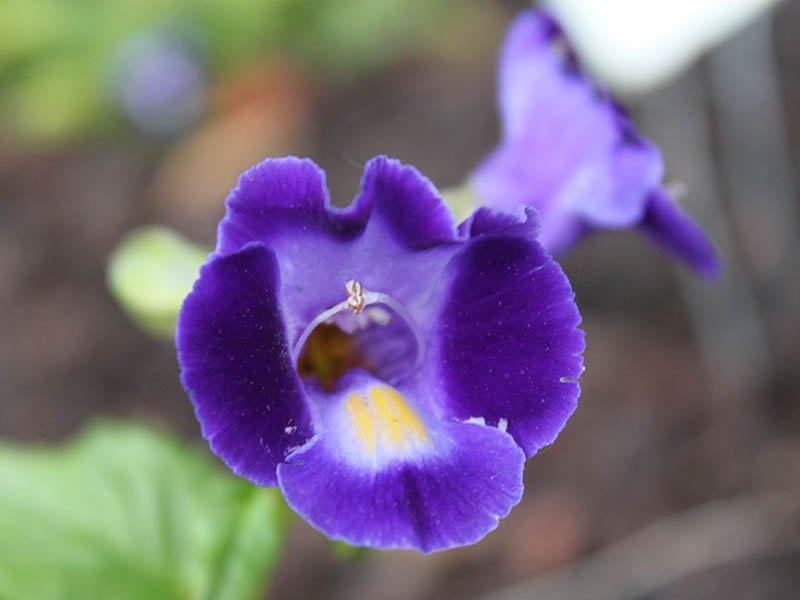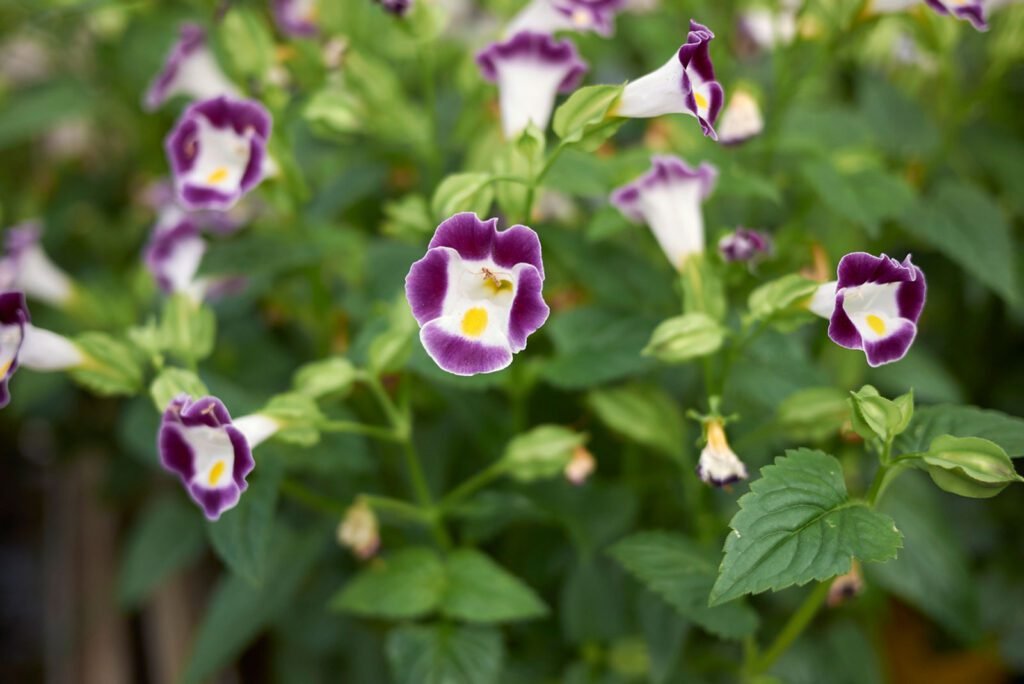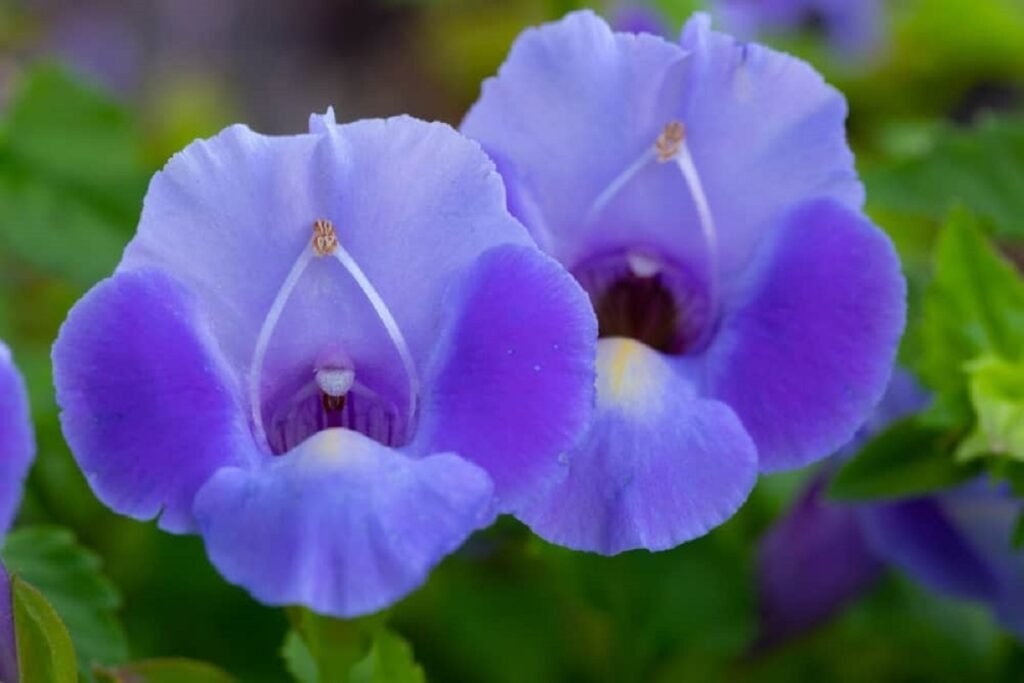Wishbone plant life (Torenia fournieri) are an super preference for bringing some coloration and lifestyles to a shadier a part of the garden. Unlike many different annual vegetation, these compact flowers don’t mind developing in partial color. Their trumpet-shaped blooms are available in several coloration alternatives; the primary species coloring is a dark blue-pink and lavender with yellow markings. Within each flower, a pair of stamens unites in a form that resembles a wishbone, consequently the plant’s not unusual call.
Follow us on Flowerworld.in, Facebook & Instagram.
Plant wishbone flora in the spring after the danger of frost has handed. While they may be annuals and will die at the first fall frost. They grow speedy and bloom profusely from early summer season until bloodless weather sets in. Moreover, the plants are deer-resistant and attractive to hummingbirds.
What is Wishbone Flower
If you’ve never grown this plant, you may wonder, “What is the wishbone flower?” A bushy annual, the Torenia wishbone flower is a remarkable desire for borders, with wishbone-formed stamens and plant life in more than one, bi-coloration sunglasses. Blooms begin in past due spring to early summer and continue until frost. Reaching 6 to twelve inches (15-31 cm.) in peak, pinching returned new increase on top encourages the small, shrub-like appearance of the plant.

Types of Wishbone Flower
Several varieties of wishbone plants range in appearance, which include:
- Catalina ‘White Linen’: This range has natural white plant life with a yellow throat and reaches about 16 inches tall.
- Kauai™ ‘Rose’: This compact variety grows 8 inches tall and huge. It has bright purple and white blooms, and is wonderful for its tolerance to heat and humidity.
- ‘Moon Purple’: This variety capabilities lavender and dark crimson blooms and grows to approximately ten inches tall.
How to grow Wishbone Flowers
If you want to develop your wishbone plant life from seed, start the seeds six to eight weeks earlier than your vicinity’s projected ultimate frost date. Note that the plant life do not transplant properly. So the seeds need to be commenced in peat or paper pots that you may plant along with the seedlings. In frost-free climates, wishbone plant life may be direct-seeded for your desired planting website outdoors approximately one week earlier than your last anticipated frost date.
Don’t cover the seeds with soil because they want light to germinate. Keep the soil moist and relatively heat—around 70 tiers Fahrenheit—until the seeds germinate. After that, they can deal with cooler temperatures.

How to care Wishbone Flowers
Aside from keeping your plant life sufficiently watered and fed, there is not tons renovation important. Deadheading is not important, even though it could assist to encourage greater growth and flowering. Furthermore, if a plant seems scraggly, you may trim it back to about 1/2 its peak.The best place for wishbone flowers is in which it gets early morning solar and afternoon colour.Wishbone flower prefers organically rich, loamy soil with a barely acidic to impartial soil pH. Excellent soil drainage is essential to save you root rot. To improve the soil first-class, keep in mind mixing in a few compost on the time of planting.
Wishbone plants require mild however steady moisture. Keep the soil moist, but ensure the flowers are not sitting in soggy soil.Wishbone flora develop satisfactory in temperatures of 70 to seventy five ranges Fahrenheit at some stage in the day and 65 to 70 stages Fahrenheit at night. They can tolerate cooler temperatures, even though frost will kill the vegetation.To maintain wishbone plants healthy and blooming, provide a balanced, all-purpose fertilizer more or less every few weeks throughout the growing season.

How to get bloom Wishbone Flower
These flowers without difficulty produce profusions of blooms if the conditions are right. The largest culprit of wishbone flora not blooming is moisture – this plant doesn’t like sitting in soggy soil and won’t bloom if the soil is too moist. It should be grown in a place with mild temperatures and humidity, as something too hot or humid will stunt the increase.
Common Pests & Disease of Wishbone Flowers
Wishbone plant life don’t have any major troubles with pests or illnesses. But they may be at risk of fungal illnesses, such as powdery mildew, that may discolor and harm their leaves and stems. Providing top-rated growing situations and proper air circulate for the flowers have to assist to prevent most problems.
Moreover, some not unusual garden pests, such as aphids and whiteflies, will prey on wishbone plant life. With aphids, you may be aware a sticky residue that these bugs go away in the back of as they feed at the flora. And with whiteflies, you frequently can see the tiny flying insects rise up in a cloud when the plant is disturbed. You can control these issues with insecticidal soap.

